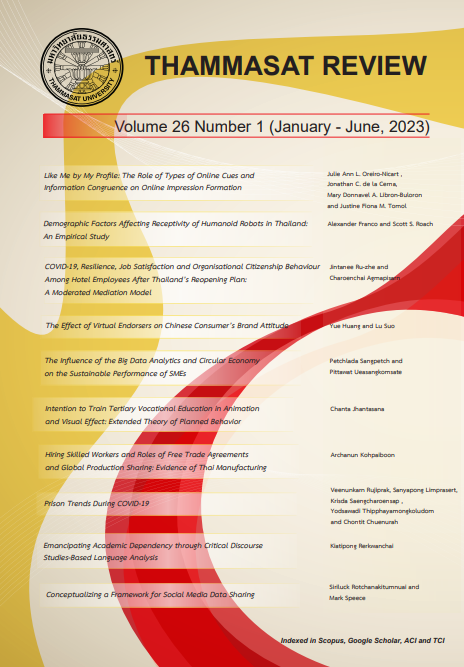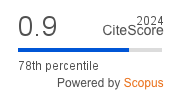Prison Trends During COVID-19
Keywords:
Prison, COVID-19, ThailandAbstract
This research article aims to examine the statistical trajectory of the number of prisoners incarcerated. By comparing studies conducted in the past and during the outbreak of the COVID-19 virus in Thailand from 2017 to 2022, it will be possible to determine the number of inmates who were detained during the spread of the COVID-19 virus and to predict the likely causes that will affect the increase or decrease in the number of inmates in Thailand during that time period. This study employed a qualitative research approach to collect numbers, statistics, and other data pertaining to the situation of inmates infected with COVID-19 in prisons, statistics of inmates held in prisons, and statistical data of convicted prisoners in terms of the number of times they have been sentenced and the nature of their offense. Including statistics on prisoner parole and the number of recidivism cases among released inmates. During the years 2017 to 2022, data has been published in the form of documents in print media as well as websites and various electronic media to compare the difference in the number of inmates before and during the COVID-19 pandemic in Thailand. The results indicate that the number of inmates held by the Department of Corrections during the COVID-19 pandemic in Thailand during the years 2020–2021 decreased substantially. However, the decrease in the number of prisoners during this time period may be attributable to the prohibition on people leaving their homes between 10 p.m. and 5 a.m., when crime is prevalent. It might also be the result of policies or actions taken to lower the number of inmates in prisons, such as the release of prisoners ahead of schedule to ease the strain on prisons brought on by the COVID-19 outbreak.
References
Aroonjit, S., & Muamoa, W. (2014). Factors Causing Sexual Crimes and Ways to Prevent Sex-Related Offences According to the Crime Prevention Triangle. Journal of Criminology and Forensic Science, Royal Police Cadet Academy, 2(1), 23-34.
Aslam, F. (2020). COVID-19 and Importance of Social Distancing. Preprints 2020, 20200400 78. doi: 10.20944/preprints202004.0078.v1
Lattimore, P. K., Steffey, D. M., & Visher, C. A. (2009). Prisoner Reentry Experiences of Adult Males: Characteristics, Service Receipt, and Outcomes of Participants in the SVORI Multi-site Evaluation. U.S. Department of Justice.
Marron Institute of Urban Management. (2020). Recommendations for rapid release and reentry during the COVID-19 pandemic. New York University.
Newton, A. & Felson, M. (2015). Editorial: Crime patterns in time and space: The dynamics of crime opportunities in urban areas. Crime Science, 4(11). doi: 10.1186/s40163-015-0025-6
Ricciardelli, R., Bucerius, S., Tetrault, J., Crewe, B., & Pyrooz, D. (2021). Correctional services during and beyond COVID-19. FACETS, 6, 490–516. doi:10.1139/facets-2021-0023
Section of Emerging Infectious Diseases. (2021). COVID-19 Situation: Public health measures and obstacles to the prevention and control of diseases among travellers. https://ddc. moph.go.th/uploads/files/2017420210820025238.pdf
UNODC. (2018). Introductory Handbook on the prevention of recidivism and the social reintegration. United Nations.
Visher, C. A., & Travis, J. (2003). Transitions from prison to community: Understanding individual pathways. Annual Review of Sociology, 29(1), 89-113.
Downloads
Published
How to Cite
Issue
Section
License
Copyright (c) 2023 Thammasat Review

This work is licensed under a Creative Commons Attribution-NonCommercial-NoDerivatives 4.0 International License.
The opinions and ideas expressed in all submissions published in Thammasat Review are solely that of the author(s) and do not necessarily reflect that of the editors or the editorial board.
The copyright of all articles including all written content and illustrations belong to Thammasat Review. Any individuals or organisation wishing to publish, reproduce and distribute a particular manuscript must seek permission from the journal first.








